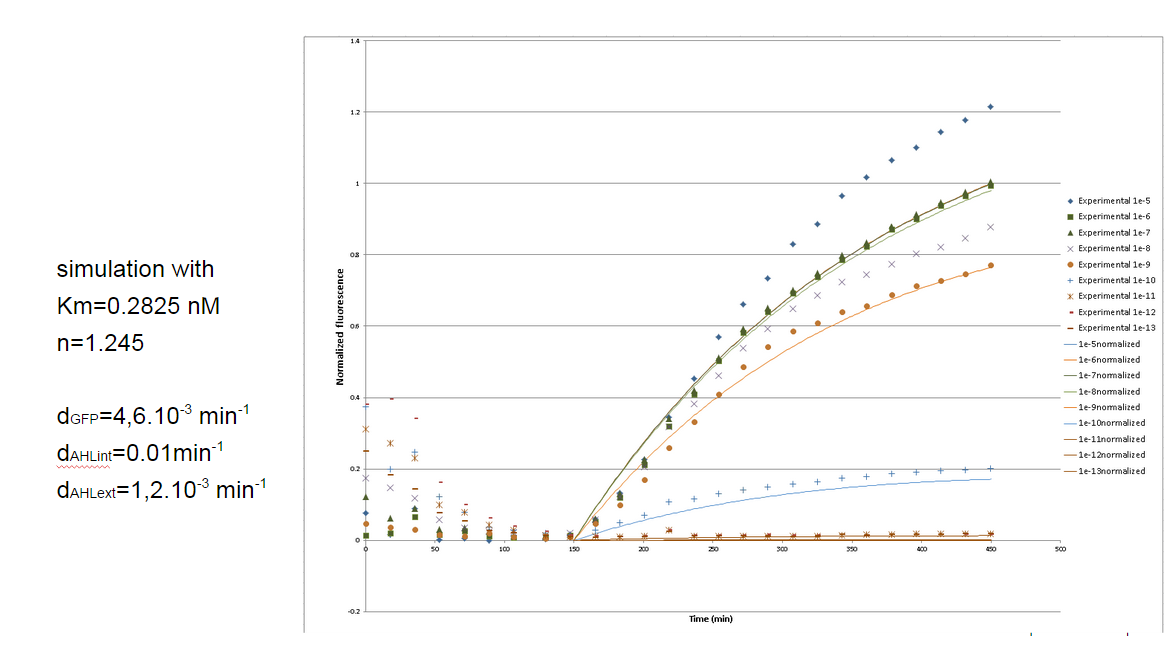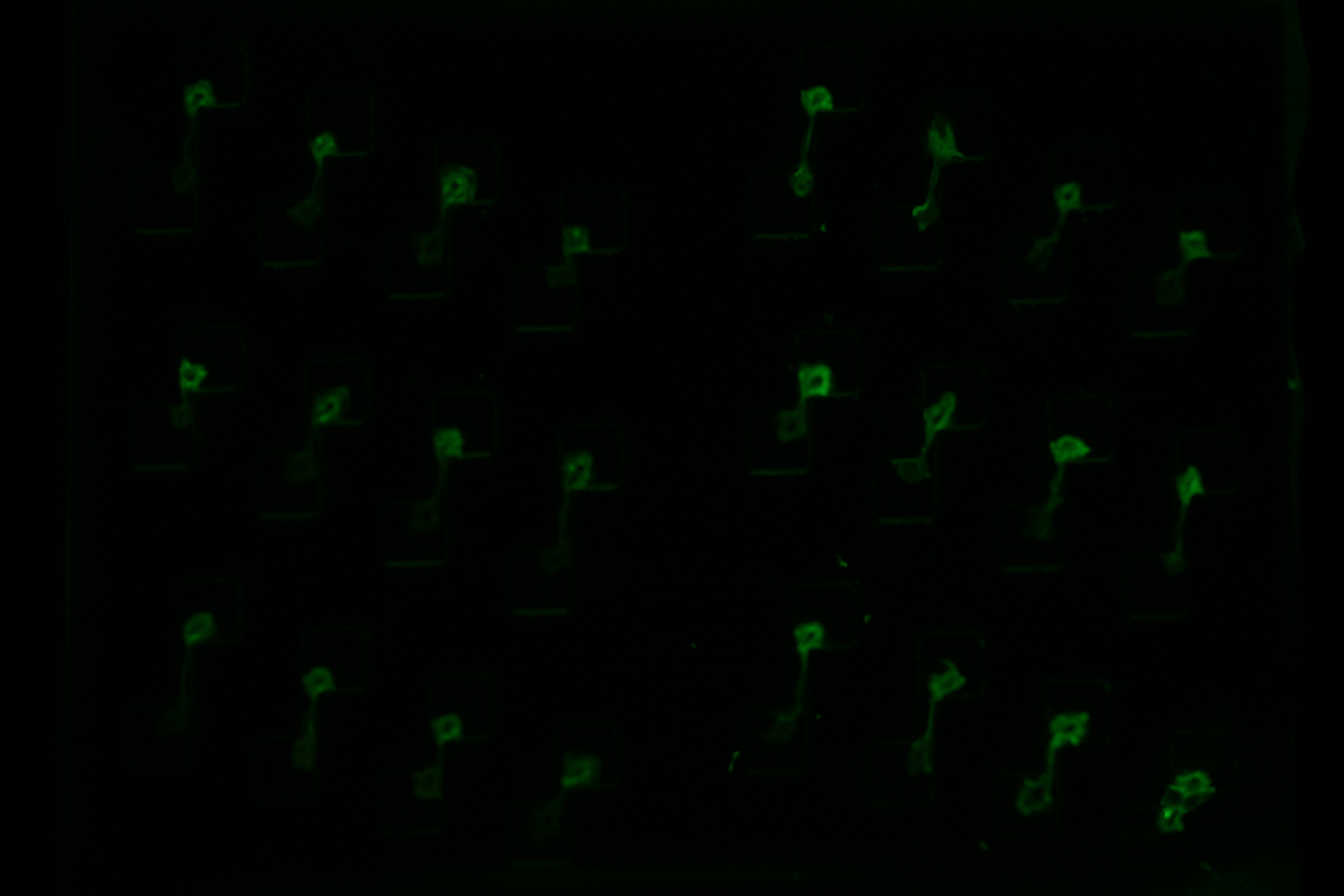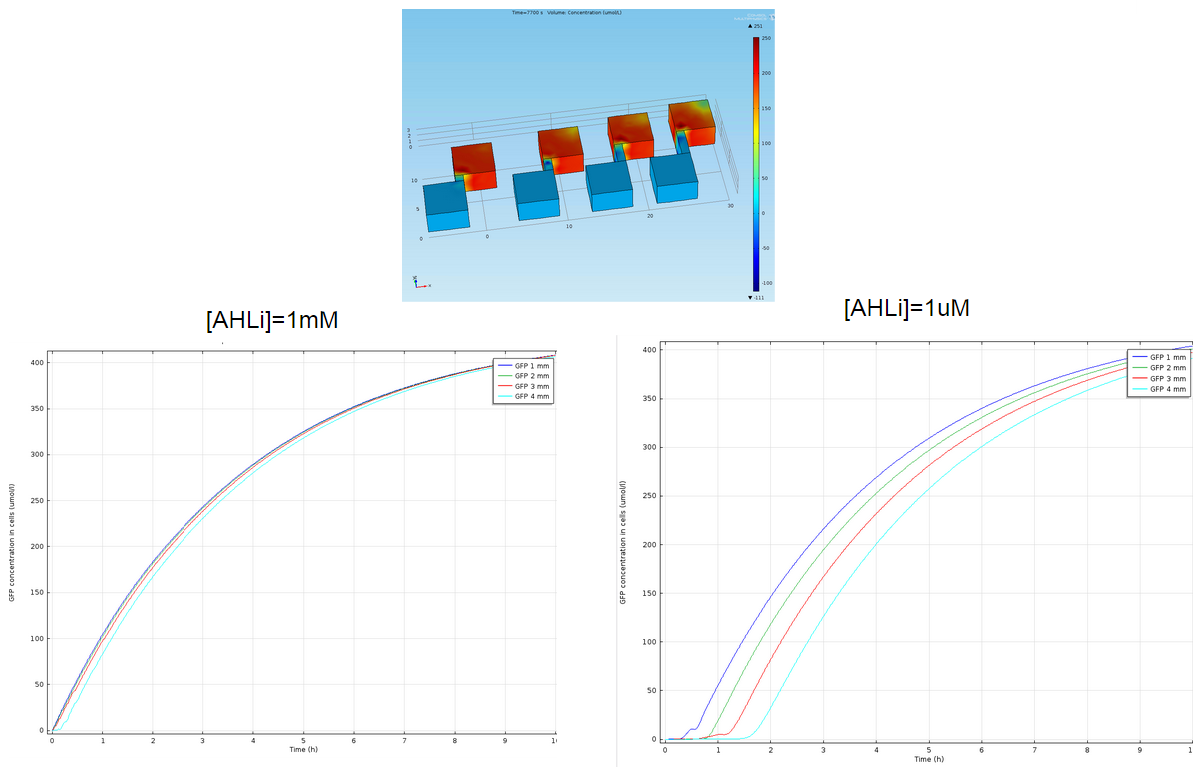Team:ETH Zurich/labblog/20140825meet
From 2014.igem.org
(Difference between revisions)
(→Monday, August 25th) |
(→Week 14) |
||
| Line 10: | Line 10: | ||
Diffusion experiment with agar. Check <html> <a class="all" id="insidelink" href="https://2014.igem.org/Team:ETH_Zurich/blog#diffusionexp"> the corresponding article </a> </html> for more details. | Diffusion experiment with agar. Check <html> <a class="all" id="insidelink" href="https://2014.igem.org/Team:ETH_Zurich/blog#diffusionexp"> the corresponding article </a> </html> for more details. | ||
</center> | </center> | ||
| - | [[File:ETH_Zurich_Diffusion2.JPG||center|500px|link=/Team: | + | [[File:ETH_Zurich_Diffusion2.JPG||center|500px|link=https://2014.igem.org/Team:ETH_Zurich/Video1]] |
Revision as of 09:31, 8 September 2014
Week 14
Monday, August 25th
- We carried diffusion experiment with different designs : punched PDMS, liquid, beads. For every design we added high concentrations of pure AHL in the sender well, so cells are glowing a lot. However because of this high concentration, diffusion is very high and at a given AHL concentration, receiving cells are glowing at the same time for all 4 channel lengths.
Diffusion experiment with agar. Check the corresponding article for more details.
Diffusion experiment with liquid. Check the corresponding article for more details.
- We have a Comsol simulation for these experiments that explains why at this concentration of AHL (1mM), all 4 wells glow at the same time irrespectively of channel length.
- We could fit degradation rates of external, internal AHL and GFP thanks to quorum sensing dynamic curves.

Fitting of quorum sensing dynamic parameters. Check the corresponding article for more details.
 "
"

